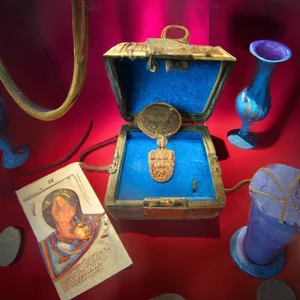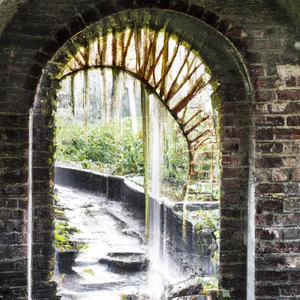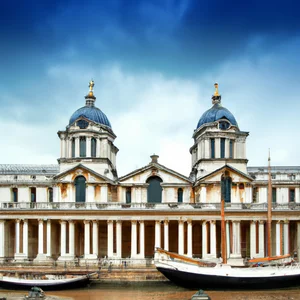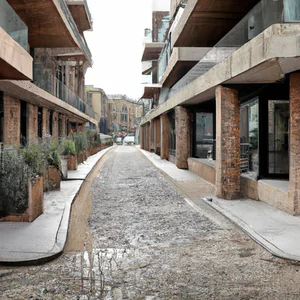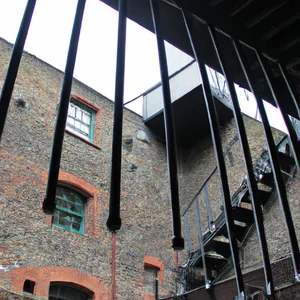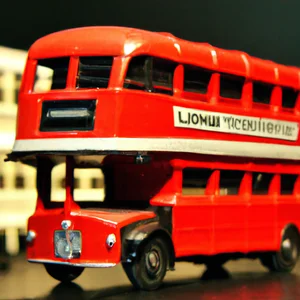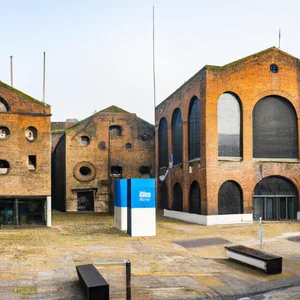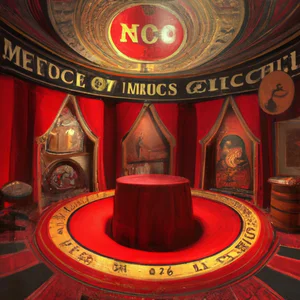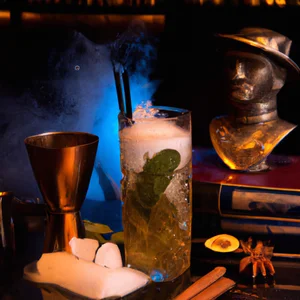Book your experience
Clerkenwell: design, gastronomy and Italian heritage in the heart of London
Clerkenwell is a really interesting place! You could say it’s like a well-shaked cocktail, mixing design, good food and a pinch of Italian history, all in the beating heart of London.
So, let’s talk about design. Here, every corner seems to tell a story, with those architectural studios and galleries popping up almost everywhere. I remember once, while I was walking, I came across a vintage furniture shop that looked like something out of a movie! The pieces were so unique that it made me want to redo my living room… but then I thought my budget wouldn’t agree!
And then there is the gastronomy. My goodness, what stuff! There are endless restaurants and cafes, each with a different atmosphere. I tasted a risotto at a restaurant there that, I swear, was like a warm hug on a cold day. I’m not sure, but I think they had a touch of Italian love in every dish. It’s a bit like when you cook for friends: you always put a bit of heart into it, and the result is fantastic.
And speaking of Italian heritage, well, here you can smell the traditions. Many restaurants and shops carry on the Italian culture, and make you feel like you are in Rome, but with a view of London. A friend of mine, who is of Italian origin, always told me about how his grandparents opened a small bar here, and that every corner of the city carries a piece of his family history. It’s fascinating, isn’t it?
In short, Clerkenwell is a place where every step seems like a journey through styles and flavours. It’s like a beautiful book, with chapters that intertwine and invite you to discover more. If you think about it, it’s a bit like life: a mix of experiences that enrich us. So, if you’re in the area, don’t miss the chance to explore this corner of London. Maybe you might even find your new favorite restaurant!
Clerkenwell: a neighborhood of innovative design
On my first visit to Clerkenwell, I found myself wandering the cobbled streets, surrounded by an atmosphere of palpable creativity. One afternoon, while I was exploring a small design showroom, I was welcomed by a young designer who, with passion, told me about his inspiration: the vibrant colors of Italian ceramics. This chance meeting opened a window onto a world of innovation and tradition that characterizes this London neighborhood.
A hotbed of creativity
Clerkenwell is known as the beating heart of design in London. It hosts numerous architectural studios, galleries and showrooms, making it a point of reference for professionals and enthusiasts in the sector. According to an article in the London Design Guide, this neighborhood has seen exponential growth in the number of creative companies over the last ten years, transforming itself into a true hub for innovation. Design Weeks and seasonal events attract visitors from around the world, providing a platform for emerging and established talent.
An insider tip
If you want an authentic experience, I recommend visiting Clerkenwell Design Week, an annual event that invites visitors to discover hidden spaces and temporary installations. However, a well-kept secret is the Museum of the Order of St John, where historic architecture blends with contemporary installations. Here, you can immerse yourself in the history of the Knights Hospitaller and discover how design has evolved care and care over the centuries.
History and culture of design
Clerkenwell’s legacy is intertwined with its history of innovation. This neighborhood has been a center of production since the Middle Ages, with an important presence of artisans and producers. The Italian influence is visible not only in the restaurants, but also in the design, thanks to the arrival of many emigrants who brought with them a distinctive aesthetic. This mix of cultures has made Clerkenwell a laboratory of ideas, where the past and present meet in a continuous dialogue.
Sustainability and responsibility
Many Clerkenwell studios and designers are committed to sustainable practices, using recycled materials and eco-friendly production methods. Growing environmental awareness has led to a culture of responsible design, where aesthetics combines with respect for the planet. This approach not only enriches the neighborhood’s offerings, but invites visitors to reflect on the impact of their choices.
An experience not to be missed
Don’t miss the chance to visit Fabric, a former warehouse that is now a world-famous club and design event location. The fusion of industrial architecture and innovation is a perfect example of how Clerkenwell embraces the new while maintaining its historical roots.
Myths to dispel
A common misconception is that design in Clerkenwell is only accessible to an elite. In reality, the neighborhood is open to all and offers numerous free or low-cost experiences, such as design tours and temporary exhibitions. You don’t need to be an expert to appreciate the talent and creativity that permeates the area.
In conclusion, Clerkenwell is a microcosm of creativity and innovation that invites discovery. Next time you’re in London, take a moment to explore this fascinating neighbourhood. What’s your favorite design spot you’ve discovered in the city?
Clerkenwell gastronomy: authentic flavors to discover
A personal experience
I vividly remember my first visit to Clerkenwell, a neighborhood pulsating with creativity and innovation. After exploring its cobbled streets, I found myself in a small trattoria, surrounded by the aroma of freshly baked bread and rich sauces. Here, a passionate chef told me his story: an Italian emigrant who, like many others, made his love for cooking the centerpiece of his new life in London. This place, with its authentic dishes, is a perfect example of the gastronomic melting pot that characterizes Clerkenwell.
A culinary mosaic
Clerkenwell is not just a design district; it is also a crossroads of culinary cultures. The restaurants here offer an incredible variety of dining experiences, from Italian trattorias to Middle Eastern eateries and venues dedicated to contemporary British cuisine. Places like the Zetter Townhouse and the St. John are famous not only for their dishes, but also for the atmosphere they manage to create, combining tradition and innovation.
Insider tips
A little-known tip: don’t just look for the most famous restaurants. Pop into Clerkenwell Green, where you’ll find small cafes and bakeries offering local specialties at affordable prices. Here, Fitzrovia is an excellent option for a coffee break, while Berber & Q serves some of the best North African cuisine in the city.
The cultural impact
Clerkenwell’s gastronomy is a reflection of its history of immigration and innovation. Over the years, the neighborhood has welcomed several communities, each of which has left an indelible mark on the culinary scene. This cultural exchange not only enriches the gastronomic offer, but also promotes a greater understanding and appreciation of different culinary traditions.
Sustainability on the table
Many Clerkenwell restaurants are embracing sustainable practices, using local and seasonal ingredients. The Grain Store, for example, is known for its commitment to reducing food waste and promoting responsible eating. Supporting these venues not only enriches your dining experience, but also contributes to more responsible tourism.
An activity worth trying
For a truly unique experience, take part in a guided food tour, where you will have the opportunity to taste authentic dishes and discover the history behind each restaurant. These tours will take you to hidden corners of Clerkenwell, giving you an insider’s perspective on the neighbourhood’s gastronomy.
Myths to dispel
A common misconception is that London gastronomy is mainly influenced by international cuisine, neglecting the value of British cuisine. In fact, in Clerkenwell, you’ll find dishes that celebrate local ingredients and British culinary traditions, often reinterpreted with a modern twist.
A final reflection
Clerkenwell is a place where every bite tells a story. What authentic flavors will you discover during your visit? Next time you stroll its streets, take a moment to savor not only the food, but also the stories and cultures that intertwine in this vibrant neighborhood.
The Italian legacy: stories of emigrants and restaurants
A journey through time between flavors and stories
I still remember the day I walked through the streets of Clerkenwell, the air permeated by an enveloping scent of fresh basil and tomato. I found myself in front of a small family-run restaurant, with a window displaying artisanal Neapolitan pizzas. Upon entering, I was greeted by an elderly lady, whose smile immediately made me feel at home. She told me the story of her family, who emigrated from Italy in the 1950s, in search of a better life. That evening, I savored not only a delicious meal, but also a piece of culinary history that profoundly impacted the neighborhood.
A fascinating gastronomic panorama
Clerkenwell is a crossroads of cultures, but its Italian heritage is particularly fascinating. Thanks to a constant flow of emigrants, the neighborhood has seen the emergence of restaurants, cafes and shops that celebrate Italian culinary tradition. From historic trattorias like Zizzi to modern pizzerias like Pizza Pilgrims, every corner offers a unique gastronomic experience. For those who want to delve deeper, it is advisable to visit Clerkenwell Design Week, where local restaurateurs present dishes inspired by their roots.
An insider tip
If you want to discover an authentic Italian corner in Clerkenwell, don’t miss Giorgio’s, a little-known but much-loved restaurant among residents. Here, you can enjoy the famous pasta alla Norma, prepared according to a family recipe that dates back generations. Furthermore, the owner is always happy to share stories and anecdotes about his life in Italy and why he chose to settle in London.
A profound cultural impact
The Italian heritage has not only enriched Clerkenwell’s food scene, but has also influenced the local culture. Italian traditions, such as Sunday lunch and holiday celebrations, have been integrated into the daily life of the neighborhood, creating a vibrant and welcoming atmosphere. Restaurants thus become meeting places, where families gather and stories are passed down from generation to generation.
Sustainability and responsibility
In an age where sustainability is key, many Clerkenwell restaurateurs are adopting responsible practices, using local and seasonal ingredients. This not only supports the local economy, but also helps reduce environmental impact. Choosing to eat in these restaurants also means embracing a philosophy of conscious consumption.
An experience not to be missed
For an unforgettable experience, I recommend taking part in a cooking class at The Cookery School, where you can learn to prepare traditional Italian dishes with fresh, local ingredients. It’s a fantastic way to immerse yourself in Italian food culture and bring a piece of Clerkenwell home.
Myths to dispel
It is often thought that Italian cuisine is limited to pizza and pasta. However, Clerkenwell offers a variety of little-known regional dishes, such as Tuscan cacciucco or Piedmontese bollito misto, which are worth discovering. Don’t miss the opportunity to savor the richness of Italian tradition in all its facets.
A final reflection
As you savor a plate of pasta at a restaurant, ask yourself: what stories are hidden behind every bite? Clerkenwell’s Italian heritage is not just a collection of recipes, but a mosaic of lives, experiences and traditions that continues to grow. We invite you to explore, taste and discover the beating heart of this neighborhood, where every restaurant tells a story and every dish is a journey through time.
Secret Tours: Explore the hidden places of the neighborhood
A personal experience
I vividly remember my first visit to Clerkenwell, when, following a dated map, I came across a small side street that seemed lost in time. Suddenly, I found myself in front of an old chocolate factory transformed into an art laboratory. The air was thick with sweet scents and the vibrant atmosphere captured me. This is just one of the many secrets that Clerkenwell has to offer, a neighborhood that invites you to get lost to discover hidden stories and places that you won’t find in tourist guides.
Discover hidden places
Clerkenwell is a labyrinth of alleyways, courtyards and small squares, each telling a unique story. Among the lesser-known places, the following are worth a visit:
- St. John’s Gate: a medieval symbol that once served as the entrance to the House of the Knights of St. John. Today, it is a museum that preserves the history of the Knights Hospitaller.
- Exmouth Market: a lively market that comes alive at the weekend, but it is on weekdays that you can enjoy the true essence of the neighbourhood, with stalls of local artisans and welcoming cafes.
- Saffron Hill: a historic street that hides picturesque corners and restaurants serving traditional dishes, far from the tourist frenzy.
Unconventional advice
If you want a truly authentic experience, try taking a tour led by a local. Many residents offer personalized walks that reveal Clerkenwell’s innermost secrets, taking you to places you would never find on your own.
Cultural and historical impact
Clerkenwell has a rich historical heritage, dating back to medieval times. Its evolution from an industrial area to a creative hub has transformed the neighborhood into a laboratory of innovation. Every corner tells stories of the craftsmen, designers and artists who have helped shape London’s cultural identity. The conversion of historic buildings into contemporary spaces has not only preserved heritage but also encouraged sustainable tourism practices.
Sustainable tourism practices
Many of Clerkenwell’s venues adopt sustainable practices, such as the use of locally sourced ingredients in restaurants and the art of recycling in shops. Choosing to visit these places not only enriches your experience, but also supports local communities and promotes responsible tourism.
An experience worth trying
For a full immersion in the secrets of Clerkenwell, take part in a pottery workshop at one of the many craft studios. Here you will have the opportunity not only to create a unique piece, but also to forge bonds with local artists who will tell you their stories and traditions.
Myths and misconceptions
A common misconception is that Clerkenwell is only for designers and artists. In reality, it is a neighborhood that welcomes anyone who wishes to discover its charms. Don’t be fooled by sophisticated appearances; Clerkenwell is a place where every visitor can feel at home.
A final reflection
After exploring the hidden places of Clerkenwell, I invite you to reflect: how many stories are there still to discover in your neighbourhood? The beauty of exploring is that every corner, every alley, can reveal a new perspective. And you, what secrets are you ready to reveal?
Local markets: a journey between craftsmanship and sustainability
A personal experience in the heart of Clerkenwell
I still remember the intoxicating scent of spices and fresh bread that greeted me when I first set foot in Exmouth Market, not far from Clerkenwell. It was a sunny Saturday morning, and as I walked among the stalls, I felt the vibrant energy of the artisans who passionately displayed their products. Each stand told a story, a piece of life of those who, like me, chose to explore the world through local flavors and creations.
Practical information on Clerkenwell markets
Clerkenwell offers a selection of unique markets that celebrate craftsmanship and sustainability. Exmouth Market is one of the most famous, open from Thursday to Sunday, where you can find organic produce, artisan foods and local artwork. Don’t forget to visit the Clerkenwell Green Market, which takes place once a month, with a focus on recycled materials and eco-friendly practices. For up to date information, it is always useful to check the official Islington Town Hall website.
Unconventional advice
If you want a truly authentic experience, try visiting the market on Friday morning. Many visitors concentrate on Saturdays, but Fridays offer a quieter atmosphere and the chance to interact more easily with vendors. Furthermore, you will have the opportunity to discover special offers and fresh products as they arrive.
The cultural and historical impact
Clerkenwell has a long tradition of markets dating back to the Middle Ages, when the neighborhood was a hub for crafts and trade. Today, local markets not only preserve this legacy, but also promote a culture of sustainability that has become crucial in the modern world. By purchasing local products, you support the community’s economy and contribute to reducing environmental impact.
Sustainable tourism practices
Choosing to visit Clerkenwell’s local markets is a great way to practice responsible tourism. Many of the vendors use organic ingredients and are committed to eco-friendly practices. Opting for zero-mile products not only reduces your carbon footprint, but also supports small producers who work hard to keep artisan traditions alive.
Immerse yourself in the local atmosphere
Walking among the stalls, let yourself be enveloped by the bright colors and sounds of the markets. The buzz of conversations, the calls of vendors and the scent of fresh food mix in a symphony that celebrates community life. Every corner is an opportunity to discover new and authentic flavours, from artisanal cheese to wood-fired bread.
An activity worth trying
If you are looking for a unique experience, take part in a cooking workshop at one of the local restaurants that collaborate with the markets. Many chefs offer courses where you can learn to prepare typical dishes using fresh, local ingredients. This is an opportunity not only to enrich your culinary skills, but also to learn more about Clerkenwell’s food culture.
Myths to dispel
A common misconception is that local markets are only for tourists. In fact, they are also frequented by residents, which demonstrates their value in the daily life of the community. Furthermore, it is not true that products are always expensive; many sellers offer affordable, high-quality options.
A personal reflection
As I walked among the stalls, I realized how important it is to support local craftsmanship and sustainable practices. These markets are not just places to shop, but spaces to connect, learn and celebrate culture. What will be your next purchase that will tell a story?
Historic cafés: where tradition meets modern
A Personal Anecdote
On one of my walks through the heart of Clerkenwell, I remember walking into a cafe that seemed to have stood still in time. The walls were adorned with black-and-white photographs of the artists and writers who once enlivened the neighborhood, and the scent of roasted coffee filled the air. This café, the Workshop Coffee, is not just a place to drink, but a real experience that tells stories of passion and craftsmanship. Here, I had the opportunity to converse with the barista, who shared his philosophy on coffee: each cup is a work of art, a meeting between tradition and innovation.
Practical Information
Clerkenwell is known for its historic cafes that mix vintage and modern atmospheres. Notable examples include The Coffee Academics and Prufrock Coffee. These places not only serve high-quality coffee, but are also committed to sustainability, using ethically grown beans. For an authentic experience, you can participate in their coffee preparation workshops, where you can learn extraction techniques from industry experts.
An Insider Tip
A little-known tip is to visit cafes during less crowded hours, such as late afternoon. This will allow you to enjoy the atmosphere and chat with the baristas, who often share fascinating stories about the beans they use and the history of coffee in the neighborhood.
The Cultural Impact
Coffee has always played a central role in the social life of Clerkenwell. Historically, these spaces have been meeting points for artists and intellectuals. Today, they continue to serve as creative hubs, where ideas and cultures mix. The interaction between tradition and modernity in these cafés reflects the transformation of the neighborhood itself, which has managed to maintain its identity while embracing change.
Sustainable Tourism Practices
Many cafes in Clerkenwell are environmentally conscious, using biodegradable materials and separate waste collection practices. Choosing to frequent these places not only offers a great experience, but also supports responsible tourism.
A Unique Atmosphere
Imagine sitting in the corner of a café, with a cup of espresso in hand, while the sound of a coffee machine running accompanies the buzz of conversations around you. The warm lights and vintage furnishings create a welcoming and stimulating atmosphere, perfect for a reflective pause or for working on a creative project.
An Activity to Try
If you are in Clerkenwell, I recommend taking part in a coffee tasting in one of the specialist cafés. These events will allow you to explore different varieties of coffee, learning to recognize nuances of flavor and aroma.
Myths and Misconceptions
A common misconception is that historic cafes are only for a niche audience. In fact, they are accessible and welcoming to everyone, regardless of your level of coffee knowledge. They are places where every person can feel at home and discover new passions.
Final reflection
While I sip my coffee, I ask myself: how important is the link between tradition and innovation for us? Clerkenwell’s cafes not only offer a delicious drink, but also invite reflection on how we can honor the past while embracing the future. What is your favorite coffee and what story does it have to tell?
Art and culture: little-known galleries to visit
An enlightening personal discovery
I still remember the first time I set foot in the Clerkenwell neighbourhood. After exploring the main streets, I was attracted to a small alleyway that seemed to escape time. Here, among the shadows of the ancient factories, I have discovered an art gallery I never imagined. It was a place that exuded creativity: the scent of fresh paint mixed with the notes of soft jazz music. It was in this space that I realized how Clerkenwell was a pulsating center of contemporary art and culture.
Galleries not to be missed
Clerkenwell is full of lesser-known art galleries offering unique experiences. Here are some of my favorites:
- The House of Illustration: Dedicated to illustration and graphics, this gallery hosts events and exhibitions celebrating both emerging and established artists.
- Zabludowicz Collection: a former church transformed into an exhibition space, where contemporary art comes to life through temporary exhibitions and special projects.
- Clerkenwell Gallery: A place where local artists exhibit their work, often with open house events involving the community.
An insider tip
If you want an authentic experience, attend a “First Thursday”, a monthly event where many galleries open their doors with special exhibitions and free refreshments. It’s a great opportunity to chat with artists and curators, discovering works that challenge convention.
The cultural impact of Clerkenwell
Clerkenwell has a long history of innovation and creativity, dating back to medieval times when it was the center of printing. Today, its galleries continue this tradition, serving as incubators for artists and creatives. The culture here is a mosaic of styles and techniques, reflecting the diversity of the community that inhabits the neighborhood.
Sustainable and responsible tourism
Many exhibition spaces in Clerkenwell promote sustainable practices, using recycled materials for their installations and holding events that raise public awareness of environmental issues. By choosing to visit these galleries, you are not only supporting local art, but also contributing to a more sustainable economy.
An experience worth trying
Visit The House of Illustration gallery during an illustration workshop. Here, you can try your hand at art with materials provided by the gallery, guided by industry experts. It’s a great way to test your creativity while exploring the neighborhood.
Myths to dispel
Contemporary art is often thought to be exclusive and inaccessible, but in Clerkenwell, the community is welcoming and open. Local galleries not only display amazing works, but are also spaces where dialogue and participation are encouraged. You don’t need to be an expert to appreciate the art here; you just need to have an open mind.
Final reflection
Every corner of Clerkenwell tells a story through art. Have you ever wondered how art can influence your view of the world? Visiting these galleries offers you not only a visual experience, but also an opportunity to explore the emotions and ideas that unite us as human beings.
Unique architecture: buildings that tell history
A Personal Experience in the Heart of Clerkenwell
Walking along the cobbled streets of Clerkenwell, I came across a building that caught my attention. It was St. John’s Gate, an ancient gate that once marked the entrance to the Convent of the Knights of St. John. Its architecture, a mix of Gothic and Baroque, tells stories of an era in which this neighborhood was a nerve center of power and religion. I couldn’t help but reflect on how the stones of this building had stood the test of time, keeping the essence of Clerkenwell alive.
A Fascinating Architectural Heritage
Clerkenwell is a real open-air museum, where each building has a story to tell. From Smithfield Market, the historic meat plaza, to the modern design structures that dot the neighborhood, the architecture presents itself as a fusion of past and present. Don’t miss the opportunity to visit Clerkenwell Green, a historic area where Georgian buildings alternate with contemporary creations, making the neighborhood an example of how aesthetics can evolve without forgetting its roots.
An Unconventional Advice
If you are an architecture enthusiast, I recommend exploring Clerkenwell at an unusual time. The early hours of the morning, when the shops are still closed and the neighborhood is shrouded in an almost mystical silence, offer a unique experience. You might even come across some artisans at work, restoring historic buildings, a rare opportunity to see architectural heritage in action.
Cultural Impact and Sustainability
The architecture of Clerkenwell is not just a matter of aesthetics; it reflects the cultural dynamism of the area. In recent years, many historic buildings have been restored with sustainable practices, contributing to responsible tourism. For example, Fabric, a famous club located in a former church, is an example of how the recovery of historic spaces can coexist with a modern urban lifestyle.
Immersion in the Atmosphere of the Place
Walking through Clerkenwell, you will feel the energy of a neighborhood that thrives on contrasts. The clean lines of contemporary design clash with the robustness of historic structures, creating a visual harmony that is pure poetry. Every corner offers a surprise, whether it’s a colorful mural or an elegant red brick building.
An Activity to Try
I suggest you take part in an architectural tour organized by Open-City. This local authority offers guided tours highlighting Clerkenwell’s architectural treasures, with experts telling fascinating stories about the development of the neighborhood and its iconic buildings.
Myths to dispel
A common misconception is that Clerkenwell is just a modern design district and little else. In reality, its historic architecture is equally fascinating and significant, with roots stretching back centuries of history. Ignoring these elements means losing a fundamental part of the neighborhood’s identity.
Final reflection
As you get lost in the streets of Clerkenwell, ask yourself: how can architecture influence the way we live and perceive the spaces around us? This is a question that can open doors to new discoveries and a deep understanding of the beauty that surrounds us. Clerkenwell is not just a place to visit, but an experience to live and feel.
Unconventional tips: discover Clerkenwell on foot
When I decided to explore Clerkenwell for the first time, I found myself on a fascinating adventure that made me feel like a real ’local’. As I walked the cobbled streets, I discovered that the best way to experience this neighborhood is undoubtedly on foot. It’s like leafing through a living history book, where each page is a corner of design, gastronomy and culture.
A journey between art and gastronomy
Clerkenwell is not just a place to see, but an experience to have. Walking along its streets, I was lucky enough to come across small art galleries and design studios that I would never have found on classic tourist itineraries. One piece of advice I would like to give is to take Clerkenwell Green, a historic area where you can find local artists at work and, sometimes, even improvised exhibitions. Don’t forget to stop at The Zetter Townhouse, a bar with a unique atmosphere, for a craft cocktail that will leave you speechless.
The power of small choices
There is nothing more authentic than getting lost in the alleys of Clerkenwell. Try to follow the pavé and let yourself be guided by instinct, discovering hidden corners and characteristic cafés like Tina, We Salute You, where the coffee is prepared with passion and the pastry shop is irresistible. A little-known tip? If you’re craving a truly unique lunch, look for Pasta e Pizza, a small restaurant offering homemade pasta that will take you back to Italy, without having to fly.
Reflections on history and culture
Clerkenwell has a rich and vibrant history, known for being the heart of the Italian community in London. This neighborhood has been a crossroads of cultures and influences, and is now an example of how the old and the new can coexist harmoniously. It’s fascinating to think that every step you take can have an impact, not only on your personal experience, but also on the local community. Walking here also means supporting the small shops and restaurants that have kept Italy’s heritage alive.
A commitment to sustainability
In an age where sustainable tourism is increasingly important, Clerkenwell stands out for its commitment to responsible practices. Many local restaurants and shops promote the use of organic and locally sourced ingredients, making your dining experience not only delicious, but also environmentally friendly.
Conclusion
Next time you’re in London, take a moment to explore Clerkenwell on foot. Who knows what little gems you might discover! Have you already thought about how walking can transform your travel experience? After all, sometimes, it is precisely in the details that the true soul of a place is hidden.
Local events: authentic experiences to live in the neighborhood
When I first visited Clerkenwell, I came across a street food festival taking place in a hidden square, surrounded by colorful murals and the smell of food from all corners of the world. As I savored a delicious fish taco, I realized how much this neighborhood was a crossroads of cultures and traditions. Events like this not only celebrate gastronomy, but also bring the community together, making Clerkenwell a vibrant and dynamic place.
Practical information on local events
Clerkenwell hosts a variety of events throughout the year, from Christmas markets to art and design festivals. To stay up to date, I recommend checking the London Borough of Islington official website or the Clerkenwell Design Week Facebook page, where upcoming events are posted. Plus, many events are free and open to all, providing a great opportunity to immerse yourself in local culture without breaking the bank.
Unconventional advice
If you want to experience a unique event, look for “pop-up markets” that take place in alternative spaces, such as former factories or art galleries. These markets, often organized by local artisans, offer not only unique products but also the opportunity to meet the makers and hear their stories. An example is the Clerkenwell Green Market, which is held every first Saturday of the month.
The cultural impact of events
Clerkenwell events aren’t just a way to have fun; they are a celebration of the neighborhood’s diversity and history. Clerkenwell has a long tradition of immigration, and many of the holidays reflect the cultures that have taken hold there. These events serve as a platform to tell stories, share experiences and promote social inclusion.
Sustainable tourism practices
Participating in local events is also a way to practice sustainable tourism. By supporting artisans and small producers, we contribute to keeping local economies alive and reducing the environmental impact linked to the transport of goods. Furthermore, many events promote ecological initiatives, such as the use of biodegradable materials and separate waste collection.
Soak up the atmosphere
Imagine walking the streets of Clerkenwell during a festival: the sound of live music fills the air, as street performers entertain the crowds. Conversations mingle with the aromas of freshly prepared dishes, creating an atmosphere of joy and conviviality. Every corner tells a story, every face is a chapter in the life of this multifaceted neighborhood.
An experience worth trying
If you find yourself in Clerkenwell during one of its events, don’t miss the chance to take part in a traditional cooking workshop. Many local restaurants offer courses where you can learn to prepare typical dishes, such as fresh pasta or Indian curry, directly from their chefs. It’s a fun and engaging way to discover the neighborhood’s culinary culture.
Myths to dispel
A common misconception is that events in Clerkenwell are for tourists only. In fact, many of them are frequented by residents themselves, who actively participate to share and celebrate their cultural heritage. So, don’t be intimidated: local events are open to all and an opportunity to connect with the community.
A final reflection
When you think of Clerkenwell, what comes to mind? In addition to design and gastronomy, consider the importance of local events in the social fabric of the neighborhood. These moments of sharing and celebration can offer a unique perspective on life in Clerkenwell, inviting you to enjoy an experience that goes beyond just tourism. Are you ready to discover what makes this neighborhood so special?

 Architecture and Design
Architecture and Design Cities and Regions
Cities and Regions Culture and History
Culture and History Events and Festivals
Events and Festivals Fashion and Shopping
Fashion and Shopping Food and Wine
Food and Wine Nature and Adventure
Nature and Adventure Unique Experiences
Unique Experiences


















